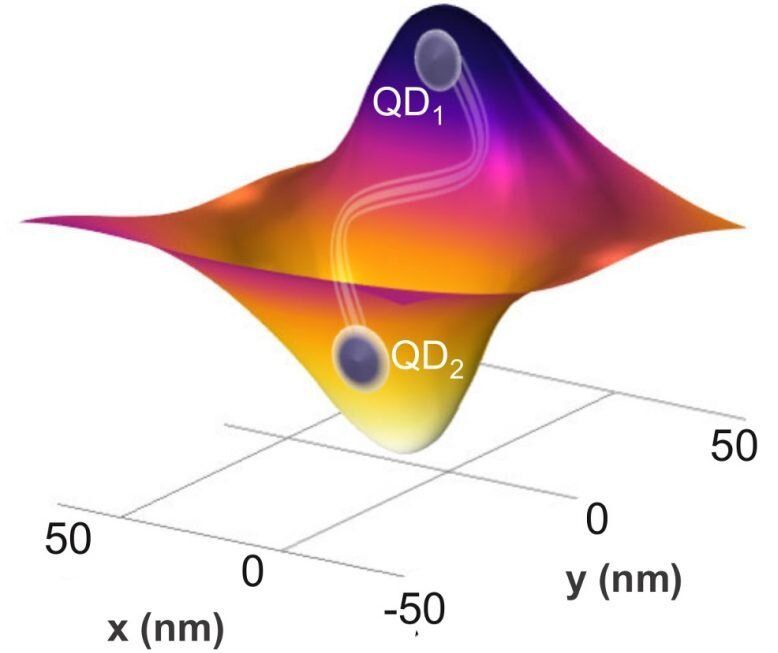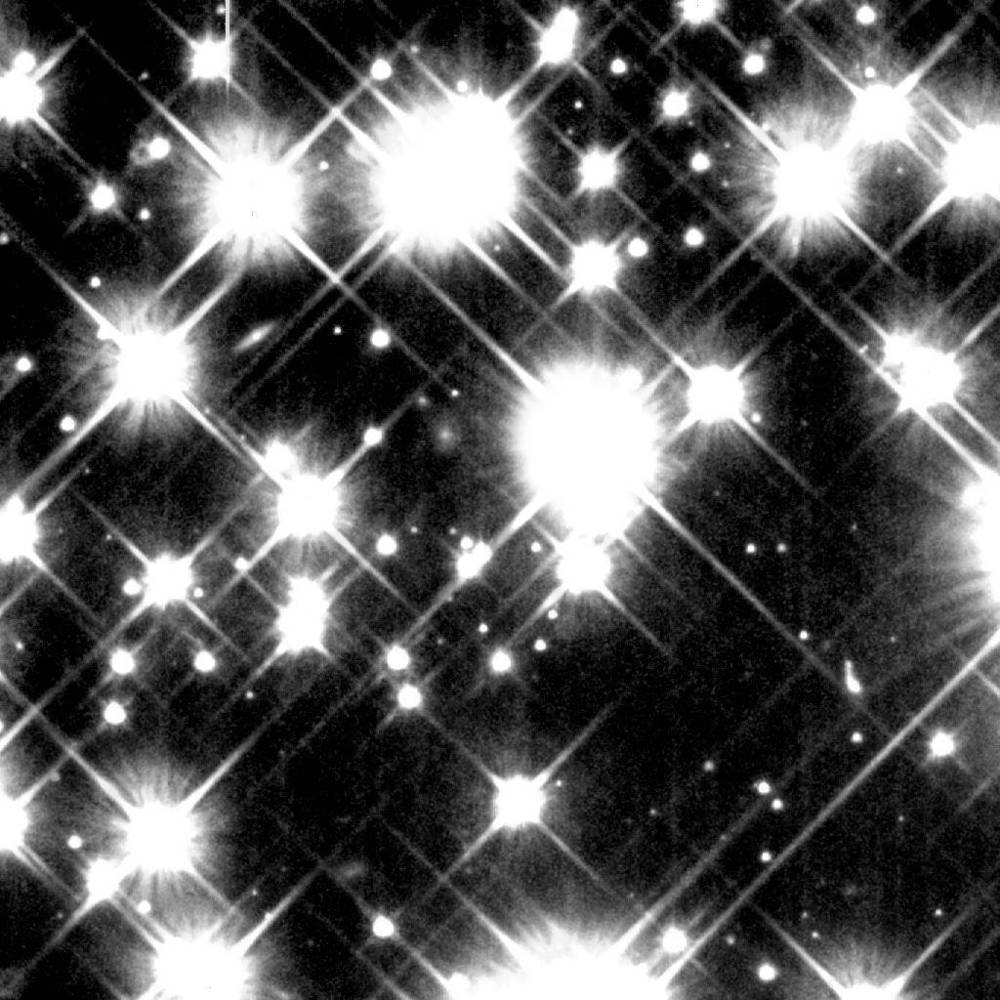Liquid membranes flip the script on filtration.



Researchers at CRANN and Trinity’s School of Physics have created an innovative new device that will emit single particles of light, or photons, from quantum dots that are the key to practical quantum computers, quantum communications, and other quantum devices.
The team has made a significant improvement on previous designs in photonic systems via their device, which allows for controllable, directional emission of single photons and which produces entangled states of pairs of quantum dots.

Researchers from the Facility for Rare Isotope Beams (FRIB) Laboratory at Michigan State University (MSU) have taken a major step toward a theoretical first-principles description of neutrinoless double-beta decay. Observing this yet-unconfirmed rare nuclear process would have important implications for particle physics and cosmology. Theoretical simulations are essential to planning and evaluating proposed experiments. The research team presented their results in an article recently published in Physical Review Letters.
FRIB theorists Jiangming Yao, research associate and the lead author of the study, Roland Wirth, research associate, and Heiko Hergert, assistant professor, are members of a topical collaboration on fundamental symmetries and neutrinoless double-beta decay. The U.S. Department of Energy Office of Science Office of Nuclear Physics is funding the topical collaboration. The theorists joined forces with fellow topical collaboration members from the University of North Carolina-Chapel Hill and external collaborators from the Universidad Autonoma de Madrid, Spain. Their work marks an important milestone toward a theoretical calculation of neutrinoless double-beta decay rates with fully controlled and quantified uncertainties.
The authors developed the In-Medium Generator-Coordinate Method (IM-GCM). It is a novel approach for modeling the interactions between nucleons that is capable of describing the complex structure of the candidate nuclei for this decay. The first application of IM-GCM to the computation of the neutrinoless double beta decay rate for the nucleus of calcium-48 sets the stage for explorations of the other candidates with controllable theoretical uncertainty.

An international team led by physicists from the Ludwig-Maximilians Universitaet (LMU) in Munich realized a novel genuine time-dependent topological system with ultracold atoms in periodically-driven optical honeycomb lattices.
Topological phases of matter have attracted a lot of interest due to their unique electronic properties that often result in exotic surface or boundary modes, whose existence is rooted in the non-trivial topological properties of the underlying system. In particular, the robustness of these properties makes them interesting for applications.
Periodic driving has emerged as an important technique to emulate the physics of undriven topological solid-state systems. The properties of driven topological systems, however, transcend those of their static counterparts. Using a BEC of 39K loaded into a periodically-modulated optical honeycomb lattice, we could generate such a time-dependent topological system.

Every second, a star dies in the universe. But these stellar beings don’t just completely vanish, stars always leave something behind.
Some stars explode in a supernova, turning into a black hole or a neutron star, while the majority of stars become white dwarfs, a core of the star it once used to be. However, a new study reveals that these white dwarfs contribute more to life in the cosmos than previously believed.
New observations of white dwarf stars reveal their stellar contribution to carbon atoms in the cosmos, one of the building blocks of life.

Samsung’s latest scientific breakthrough might change the very way we perceive semiconductors, largely on account of the fact it’s two-dimensional. Called amorphous boron nitride (a-BN), the substance in question is composed of but a single layer of atoms and characterized by an amorphous (liquid-like) molecule structure. It’s also the best 2D material for insulation ever synthetized, with Samsung hoping it will be able to utilize in production of revolutionary graphene wafers with unprecedentedly low level of electrical interference.
The discovery of a-BN is hardly Samsung’s first foray into 2D materials. The first and possibly most famous such substance — graphene — has been the subject of countless projects at the Korean conglomerate ever since it was first isolated in 2004. Following the 2016 Galaxy Note 7 fiasco, Samsung is believed to have doubled down on graphene R&D with the goal of eventually integrating the 2D material into its batteries, making them more stable, i.e. less prone to spontaneous combustions.
Making graphene batteries is no small feat, however, and it’s been a while since Samsung last made significant inroads on that front. Scalability remains a key issue, particularly in regards to mass-production costs. Graphene wafers, on the other hand, are expected to play a major role in the development and volume production of next-generation server memory modules, as well as DRAM and NAND memory chips.

Zero electrical resistance at room temperature? A material with this property, i.e. a room temperature superconductor, could revolutionize power distribution. But so far, the origin of superconductivity at high temperature is only incompletely understood. Scientists from Universität Hamburg and the Cluster of Excellence “CUI: Advanced Imaging of Matter” have succeeded in observing strong evidence of superfluidity in a central model system, a two-dimensional gas cloud for the first time. The scientists report on their experiments in the journal Science, which allow to investigate key issues of high-temperature superconductivity in a very well-controlled model system.
There are things that aren’t supposed to happen. For example, water cannot flow from one glass to another through the glass wall. Surprisingly, quantum mechanics allows this, provided the barrier between the two liquids is thin enough. Due to the quantum mechanical tunneling effect, particles can penetrate the barrier, even if the barrier is higher than the level of the liquids. Even more remarkably, this current can even flow when the level on both sides is the same or the current must flow slightly uphill. For this, however, the fluids on both sides must be superfluids, i.e. they must be able to flow around obstacles without friction.
This striking phenomenon was predicted by Brian Josephson during his doctoral thesis, and it is of such fundamental importance that he was awarded the Nobel Prize for it. The current is driven only by the wave nature of the superfluids and can, among other things, ensure that the superfluid begins to oscillate back and forth between the two sides—a phenomenon known as Josephson oscillations.

Layered van der Waals materials are of high interest for electronic and photonic applications, according to researchers at Penn State and SLAC National Accelerator Laboratory, in California, who provide new insights into the interactions of layered materials with laser and electron beams.
Two-dimensional van der Waals materials are composed of strongly bonded layers of molecules with weak bonding between the layers.
The researchers used a combination of ultrafast pulses of laser light that excite the atoms in a material lattice of gallium telluride, followed by exposing the lattice to an ultrafast pulse of an electron beam. This shows the lattice vibrations in real time using electron diffraction and could lead to a better understanding of these materials.

In a development that could finally shed light on dark matter, an international team of scientists have detected neutral hydrogen atoms, from a galaxy other than our own, for the very first time.
The finding came thanks to the enormous Five-hundred-meter Aperture Spherical Radio Telescope (FAST), which sits in a hilly, green natural basin in southwest China’s Guizhou Province.
The researchers detected the hydrogen coming from three extragalactic galaxies with only five minutes of exposure, a feat that demonstrates the exceptional sensitivity of the telescope. It is the first time neutral hydrogen from outside the Milky Way has been detected.

Scientists at the University of Tsukuba use computer calculations to propose a new way to rearrange the carbon atoms in a diamond to make it even harder, which may be useful in industrial applications that rely on synthetic cutting diamonds.
Researchers at the University of Tsukuba used computer calculations to design a new carbon-based material even harder than diamond. This structure, dubbed “pentadiamond” by its creators, may be useful for replacing current synthetic diamonds in difficult cutting manufacturing tasks.
Diamonds, which are made entirely of carbon atoms arranged in a dense lattice, are famous for their unmatched hardness among known materials. However, carbon can form many other stable configurations, called allotropes. These include the familiar graphite in pencil lead, as well as nanomaterials such as carbon nanotubes. The mechanical properties, including hardness, of an allotrope depend mostly on the way its atoms bond with each other. In conventional diamonds, each carbon atom forms a covalent bond with four neighbors. Chemists call carbon atoms like this as having sp3 hybridization. In nanotubes and some other materials, each carbon forms three bonds, called sp2 hybridization.